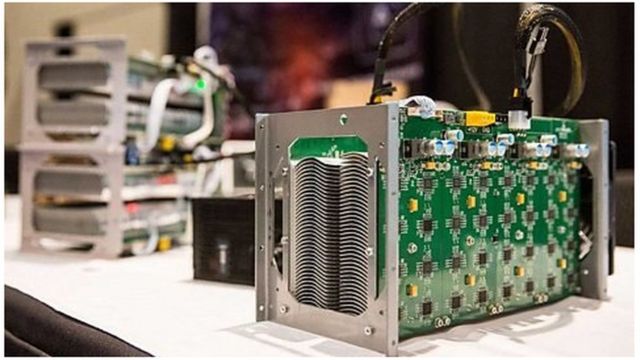
Although we are all used to the idea of digital currency – spending and receiving money that is not physically in front of us – cryptocurrencies, like Bitcoin, remain a mystery. bitcoin mining? How could we use the money in the future? And can we even trust cryptocurrencies? In this quiz, we ask Dr. William John Knottenbelt, Director of Imperial College’s Center for Cryptocurrency Research and Engineering, to help us better understand this type of mysterious currency.
1. What is bitcoin and how does it work?
Bitcoin is a form of electronic money. This means that he has no physical form. Instead, e-money units are exchanged over a computer network that has some unique properties: There is no central point of control (there are no “banks”).
There is no central transaction storage point (a central database that contains a record of all transactions performed).
Instead, it operates on a global network with thousands and thousands of nodes – a machine within a network like a computer or other device – that process and store transactions together.
With thousands of nodes it is difficult to have a common record of all transactions, but a technology called blockchain makes this possible. Blockchain is a shared record of transactions. It prevents anyone from “double-spending” bitcoins and makes it extremely difficult to change historical transactions. It is very difficult, if not impossible, to stop it or interfere with it.

Glossary
Node: A machine that participates in the global network by running bitcoin software.
Blockchain: A database of financial transactions that constantly grows as new transactions or “blocks” are added to it, forming a continuous, public chain of data.
Cryptocurrency: Digital, decentralized currency that uses cryptography for security.
Cryptography: The science of encoding and decoding messages and data in a way that makes them secure. For example, by encryption.

2. Where does it come from?
Bitcoin was first published as an idea on an electronic mailing list for computer scientists studying secure communications (or cryptographers) in 2008.
The author goes by the mysterious pseudonym of Satoshi Nakamoto, but no individual (or group of people) has so far been conclusively identified as Satoshi.
3. Is it still used, and where can it be used?
Bitcoin is still in use and is very actively traded on cryptocurrency exchanges, which allow users to exchange “regular” money like pounds for bitcoin.
To use bitcoins, the first step is to create a wallet (which can be online, a mobile app or, for added security, a hardware device). This protects the secrets that are used to allow the movement of bitcoins under your control.
Your wallet will control several “addresses” which, like bank account numbers, can be used to receive bitcoins. It will also control the secret password which is needed to authorize the sending of bitcoins (technically known as the private key). If you lose your private key or it gets stolen, you effectively lose control of your bitcoins, much like someone discovering your PIN.

4. Why would someone want bitcoins instead of “normal” money?
The “normal” money we use today is actually quite unusual in the history of money, in that it is itself no longer valuable (like gold coins).
If you read the promise on a £10 note, it says (in very small letters):
“I promise to pay bearer, on demand, the sum of ten pounds.”
(Next time you find a ten pound note in old jeans, take a look).
That’s not too big of a promise if you consider that all the guarantee authority (like the Bank of England) has to do is print another piece of paper to fulfill that promise.
As money is created, it erodes the value of existing money in circulation. People don’t necessarily notice this erosion because the nominal amount of their money stays the same; however, they notice that their weekly groceries, restaurant meals, and movies are costing more and more money.
Bitcoin is different.
The supply of bitcoins is carefully controlled and limited, and no one can create or issue more bitcoins at will. There will never be more than 21 million bitcoins, and each bitcoin is itself divisible into 100 million units called satoshis. This helps prevent the kind of value erosion that affects “normal” currency (a phenomenon that people in Zimbabwe and Venezuela know all too well).
5. Can bitcoin make you a millionaire?
Bitcoin is a high risk, speculative and volatile asset. Like many high-risk investments, it goes through boom and bust cycles, and depending on when you buy it (or acquire it), it can make you a millionaire or ruin you.
In its early days, bitcoin traded at $1 per bitcoin; it peaked at around $20,000 in 2017 before dipping to around $3,000 and then stabilizing around $8,000.
Like a stock or a house, bitcoins are not worth more or less than what other people are willing to pay for them.

6. What is bitcoin mining?
Bitcoin mining is the process of adding new groups of transactions (called blocks) to the shared record of transactions (called the blockchain).
A great global competition is constantly taking place – called the mining race – to win the right to add a new block to the blockchain.
To participate in this competition, users must purchase specialized mining hardware that consumes a lot of electricity; the hardware itself is likely to quickly become obsolete due to the constant invention of more efficient hardware – so it’s not a profitable business for most people.
People who engage in this activity are called bitcoin miners. They participate in this competition for two types of rewards:
- the block reward (currently 12.5 BTC) issued to the publisher of each block
- transaction fees – fractions of bitcoins that incentivize miners to include transactions in published blocks.
To make matters worse (from the miner’s perspective), the “difficulty” of the competition increases as the number of miners involved increases, in order to avoid issuing new bitcoins too quickly. The block reward is also halved every four years, making them much more expensive to produce.
7. Can cryptocurrencies be trusted?
As in any rapidly developing space where new technologies proliferate, there are high quality cryptocurrencies and low quality ones.
Faced with often shrewd marketing operations, many ordinary people find it difficult to distinguish between cryptocurrencies that have real potential and show genuine points of technical novelty, from those that are mere clones of other currencies or, worse, again, real scams.
Sometimes schemes like One Coin pretended to be cryptocurrencies, but then turned out to be nothing more than well-organized pyramid schemes, backed by a centralized database.

8. Could cryptocurrencies become more popular than physical currency in the future?
It is theoretically possible, but it will probably take many years and many technical, economic, regulatory and legal problems before it becomes a reality.
For example, the Bitcoin blockchain can currently support far fewer transactions than traditional centralized payment networks like Visa or Mastercard.
One category of cryptocurrencies that is proving to be very popular and perhaps more likely to become more popular than physical currency is that of “stable currencies”, i.e. cryptocurrencies whose value is tied to ‘normal’ currencies like the US dollar, euro and pound, so unlike bitcoin, a unit cannot be worth £26,000 one year and £6,000 two years later.













